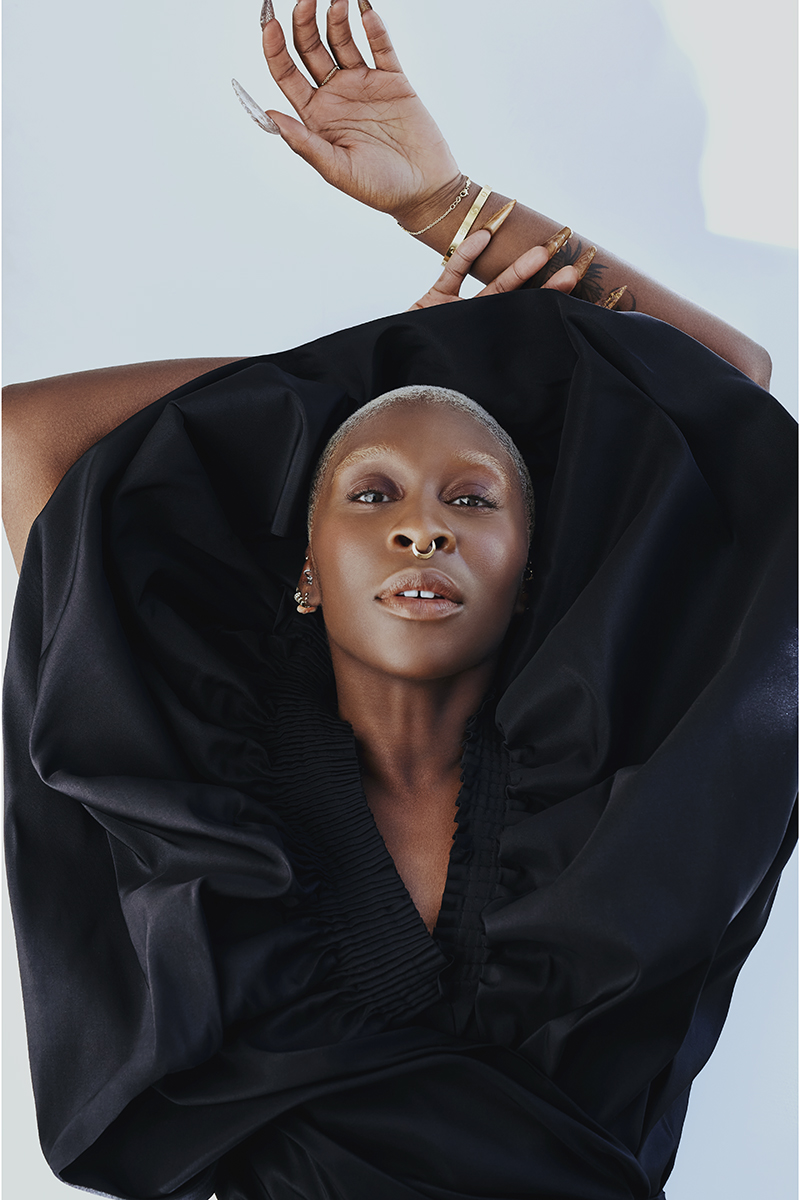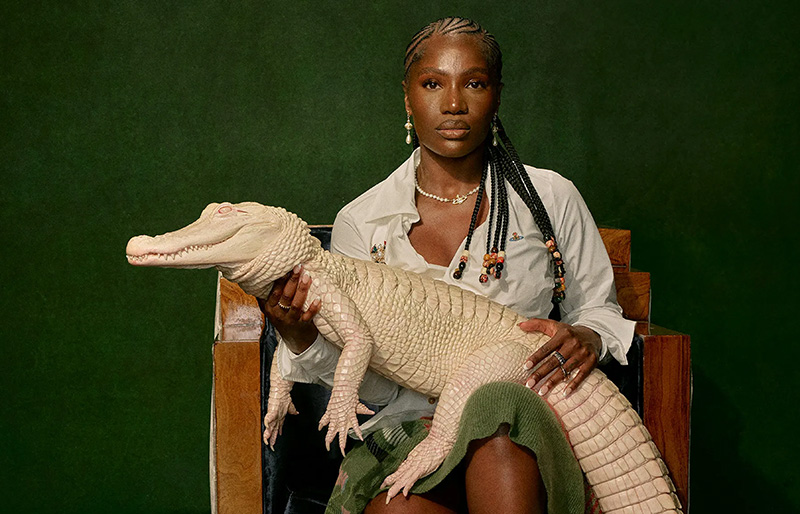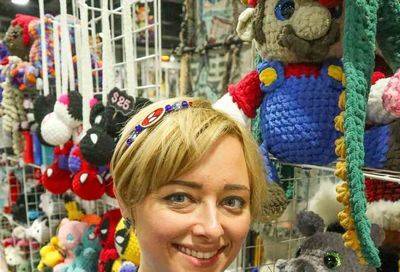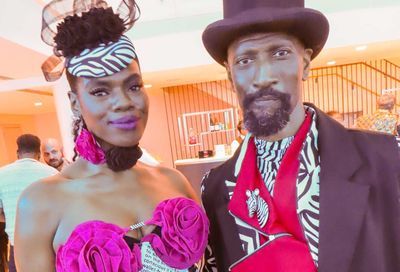Community Building
Michael Sessa on The Center for GLBT in D.C., life in leather, and being outed by 'Oprah'
Much of metropolitan Washington’s community is from elsewhere. Michael Sessa, raised in a thoroughly Italian-American neighborhood in Boston’s Revere suburb is no exception. Traces of a Boston accent still come through, but that doesn’t mean this 37-year-old hasn’t found a sense of community in his new home.
As a matter of fact, he’s spent the past eight months as president of the The Center, ”home for GLBT in metro D.C.” While not a community center in the traditional sense — yet — The Center is the closest thing the local GLBT community has to a central meeting place, thanks to nearly $300,000 in seed money from the Cherry Fund.
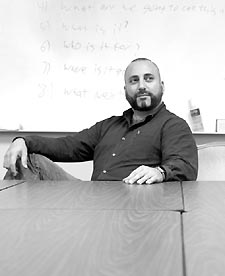 Michael Sessa |
Since February, The Center has had a physical address, shared with three other GLBT community organizations. And there is a conference room for community use. There are not, however, the familiar community-center trappings of a drop-in center, lounge or space to hold a relatively large community gathering. What exists now is not all things to all people.
Friday afternoon, Aug. 19, that was something Sessa had to deal with. That morning, there was news circulating of dissension in The Center hierarchy, of firings and resignations, and of financial troubles. All of it was landing in Sessa’s lap.
”I’m not sure people expect press releases when we make changes in staffing,” Sessa said that afternoon, seeming to feel a bit of the heat. ”If we’re going to get this much press every time we make a change, that’s fine. [But] I’d rather have people focusing on the programs and how we’re serving the community.”
Those programs include an outdoor movie series, Screen on Stead, that just wrapped its summer season, and an effort to address crystal methamphetamine abuse in the gay community. As for the finances, Sessa emphasized that when he was voted in as president eight months ago, The Center had $75,000. ”That’s what I was handed.” Subtract from that $35,000 in earmarked contractual fees, and that leaves $40,000. Sessa says the balance on the books today is between $35,000 and $40,000.
Sessa and The Center, however, are not one and the same. Sessa works, unpaid, at the pleasure of the 10-person Board of Directors, of which he’s also a member. He is their chosen spokesperson, but their votes call the shots, he says.
Sessa, after all, has his own fulltime commitment as executive director of the Postsecondary Electronic Standards Council (PESC). And he has his own story, moving from that Boston suburb, to fine arts studies at Dartmouth College, to the leather community and beyond.
A sensible starting point for Sessa’s story is 1950, in a scene set to Italian accordion music.
METRO WEEKLY: How did your parents meet?
MICHAEL SESSA: My mom was playing the accordion in a band in Boston in 1950. It was an Italian orchestra-type band. She was 18. It sounds so Godfather. My dad came over about 1950 ”on the boat.” He didn’t know how to speak English. All he could say was ”cheeseburger.” He met [my mother] at the bar because he heard this was an Italian place that had an Italian band.
When we were kids, there was accordion music in the house, but my mom hated it. Her mother and father had forced her to take accordion lessons. My Uncle Charlie also used to play accordion, so they’d play together. And my father used to sing. Growing up, it was strictly Italian.
MW: Did you have friends outside this Italian-American culture?
SESSA: It was totally Italian. Our neighbors across the street were Italian. Their great grandmother was my great grandmother’s maid of honor in 1919. Everybody was Italian until the guy next door, who was Polish, moved in. That caused a bit of a ruffle.
MW: This almost dictates that you must’ve been an altar boy.
SESSA: Altar boy. Choirboy. Yep.
MW: What was your first step outside the Italian-American bubble?
SESSA: Going back and forth to Boston all the time on the T [subway], you’re exposed to lots of different sorts of people. You’d hop on the T and go to the beach. You go to Faneuil Hall, get an ice cream, cause some trouble, hop back on the T, go home and eat dinner.
MW: You caused trouble?
SESSA: [Laughs] No. Never. My brother and sisters teased me as being the ”favorite.” I was well-behaved, an achiever. I did what I was told. When I got to high school I joined everything from the physics team, to the math team, to soccer. I was captain, MVP. I ran track. I worked with the newspaper.
MW: From your family’s point of view, your point of view, Dartmouth was an ambitious step for you?
SESSA: I don’t think ”ambitious” is the right word. At the time, I didn’t even know what an Ivy League school was. My guidance counselor, Dorothy Foley, God bless her, just looked at me and said, ”I have the school for you. Why don’t you apply to Dartmouth?” Next thing you know, I had an interview. What I found out years later is that they had a committee that would look for different types of diversity. Someone championed me through the process. It wasn’t just chance.
MW: What was Dartmouth looking for in you?
SESSA: All colleges are competing for the best candidates, but they also want to ensure that they have diversity, that they’re reaching out to, you know, the middle class — people that might not have the access that people from historically rich families have. And we weren’t rich by any stretch of the imagination.
MW: Were you the first person in your family to go to college?
SESSA: My sister had been going to fashion design school. My father was very adamant that my sister couldn’t go to a school unless she could get there by subway. Then I came along and said, ”I’m going to Dartmouth.” My parents didn’t know what this was, and they asked around and found out it was prestigious. They just looked at me and said, ”How are we going to pay for this?” I said, ”I don’t know. We’ll find a way.”
This made my sister very angry, so they eventually let her go to [the University of Massachusetts Amherst]. She had a good time.
MW: And you had a good time at Dartmouth?
SESSA: I wouldn’t change a thing about Dartmouth, although it was very difficult. It was much, much more conservative than it is now. I wasn’t out yet. I look back and say I wouldn’t change it because I think I’d be dead if it didn’t happen [the way it did]. Homophobia at Dartmouth was not just strong, it was life threatening.
My first year, 1985, there was the whole thing with apartheid in South Africa. Some activists on campus built little, tiny shanties [to protest the South African regime] in the middle of the [campus] green. They were living there. There was a big thing about whether the college should allow this or not. In the middle of the night, [students associated with] The Dartmouth Review, the conservative newspaper, went out with sledgehammers and knocked them over. The big thing was they didn’t know if anyone was in them. That caused a large stir on campus, but nothing was ever done to the kids at Dartmouth Review who did this.
The second thing the Dartmouth Review kids did was they broke into the office of the gay and lesbian student group. I think it had 10 or 20 members. They stole the names of the students and mailed letters to the parents saying, ”Do you know your son, your daughter, is a fudge-packer, is blah blah blah?” Again, nothing was done to them. Knowing this, and knowing I was still confused, it made it very easy to stay in the closet. I’m so glad I did, because that’s when AIDS was breaking out. There was no information. I think I’d be dead because I wouldn’t have known about safe sex. Because I was petrified, I stayed away from it. I didn’t have sex with a guy till I was 23 or 24. And it lasted about 30 seconds.
MW: You’ve said your father actually outed you first, in a manner of speaking.
SESSA: From watching Oprah, he determined and told me that I was gay when I was 21. During the ’80s, every show was ”my neighbor is gay.”
I always knew there was something different about myself. People say, ”I always knew [I was gay].” You don’t know you’re gay. You just know that something’s different.
My father always forced me to go out with girls, and he’d tell me what to do with them. Like he’d ask: ”Do you have a date?” ”Are you with a girl?” ”Do you know how to do something with a girl?” There was a lot of pressure because I knew I didn’t want to do that. I just didn’t know why. When he’d say, ”You take your pants off,” I’d be like, ”Dad! Why are you talking about this?” I would think that it was just so inappropriate. I think he had an inkling, but he didn’t know what it was either. I’m sure he didn’t know what gay was.
After Oprah, he said in Italian, ”You have to live your life the way you have to live your life. No matter what happens, I love you.”
What balls he had to address me, man to man. Actually, he made an appointment with me. ”We have an appointment for 2 o’clock tomorrow in the backyard under the canopy.” That’s how my father went about things. He was in the Army. I had just graduated [from college]. I’d only had sex with women. My relationships with men were always stronger. He must’ve just known. But I didn’t know what he meant. My first impression was, ”Oh, my God, I’m so embarrassed. What is he talking about? Is that what it’s called? Am I really gay? What does ‘gay’ mean? Am I going to start doing things with my butt?” I could see being with a guy, but anything with the butt — ooh, then you were really gay. I didn’t want to be that.
MW: Were you homophobic?
SESSA: Yes, but I never did anything bad to anybody. You adopt your way of thinking from your parents, and we were a very Italian, very Catholic family. I used to go to church all day on Sunday. If I wasn’t singing, I was the altar boy. If I wasn’t the altar boy, I was with my mother. If I wasn’t with my mother, then I was with my grandfather making the pasta for the day.
MW: What was the evolution from your father’s revelation that you were gay to the point that you were comfortable with it?
SESSA: A lot of pain and torture. I fell in love with one of my [college] fraternity brothers. We actually moved in together in Boston [after graduating]. He ejected me from the apartment because he couldn’t take that I had such strong feelings for him. We were having a very infrequent sexual relationship that he denied ever existed. The relationship was too intense, too close. He had a girlfriend. I was very jealous. I didn’t know why. There was this inner struggle going on. Finally, him sort of pushing me out of the apartment, saying ”get out,” made me have to make some decisions — to come to the mirror, as they say.
I kind of took two years to put my life together, to do a lot of thinking and writing. Then, I did come out when I was like 23 or 24. It was with a bang. I told everyone all at once. They already knew. I was the last person to acknowledge it. I would wear a pink triangle necklace that I bought at pride. It was my little reminder: live proudly, live openly. It set a new paradigm for my life.

MW: How did you get into leather?
SESSA: I moved to the South End of Boston when I was about 26. I hit every club. I stepped into the Ramrod [leather bar] and it was so laid back and accepting. I was fascinated by the whole backroom scene, and how you had to have certain leather items to get in. It could be that because I was so closed to the whole gay world for so long, that the closed back room was very comforting to me, very safe.
That was the heyday of my leather experience in Boston. It was also the time of my first trip to Provincetown. Now I go every year. They had this little mall thing with a leather shop. There was this bald leather daddy. Hot, muscle-y, a beard. Next thing you know, he’s buckling this harness on me, custom-fitting it. I put that thing on and went to The Vault, and I was like, ”That’s it. I know what I like.” I still have the harness. I still wear it all the time.
What I liked back then was the safety and comfort. What I like about it now, here in D.C., is its community. My given family is my brothers and sisters. My chosen family is the leather community. This holds true around the world. It’s empowerment, as a human being, as a man. It’s knowing how to be a man. It’s being respectful, speaking with dignity, and treating others like you want to be treated. As long as you’re working through your passions and not hurting anyone else, you don’t need to ask permission to be a leather man. I don’t apologize for it.
You can’t say ”leather” without people wanting to bring up sex and BDSM [bondage, discipline and sadomasochism]. And yes, I’m involved with the leather community and the whole faction of the BDSM community. It’s large — larger than people know. I’m talking gay and straight.
I might be kinky. So what? Everybody knows. It’s not a secret. There’s nothing hidden about my life. I’m not doing anything illegal. I’m not doing anything that hurts anyone else. The motto we run by is ”safe, sane and consensual.” I love the leather community because I believe in that motto of respect. I don’t think people respect each other enough.
MW: It’s a sort of commanding personality that fits, in the sense that you are the official voice of the center. Not commanding enough, however, to deter anonymous detractors.
SESSA: The Center is not about me. It’s not about a single person. It’s about the community. The Center is represented by the board, and I am a spokesperson. The board is the organization that has the power, not me. I serve the board. I am under the board, not over the board. The board hired me as the president and CEO. It’s not about glory and prestige. It’s about hard work. I put 30 to 40 hours per week of volunteer time into running The Center.
I want to break the paradigm of how things have worked in the past, but it’s hard in D.C. In D.C., it’s always about the person. But it’s not “The Michael Show.” This is not about my personal agenda.
The Center’s board is about what’s in the best interests of moving The Center forward. Unfortunately, many people have their own personal ideas about what The Center should be. Moving their personal agendas has received higher priority than the greater good for the community or The Center.
You cannot run a community center if three people, four people, seven people, are all working from different agendas. So the board has come to a conclusion and has voted unanimously to make me the spokesperson. It’s a lot of responsibility. Do you think I like having my name in the newspaper? I don’t. I don’t want to be there. I just want The Center to succeed. I want the community to figure out how it needs The Center, then I want to make that happen. It’s about collaboration. It’s about the community.
I had to buy Robert’s Rules [of Order]. Even though I’ve known about Robert’s Rules for years, I bought the stupid book and I read it from cover to cover so that I can be an objective meeting organizer and chair, so that it is not about Michael. Everybody has a voice, but there is a proper way to raise your voice and there is a proper way to raise an issue. An improper way is to never say anything to anybody, then move behind the scenes and cut someone off at the knees. It’s just disrespectful.
My job at PESC is to work across different factions and bring everybody together on a common mission. Everybody has a certain thing that they’re good at, and this is what I’m good at. I’m drawn to this. Bringing people together is what community is about. I think that’s why I enjoy what I do. I don’t bitch that I’m working 30 to 40 hours a week for The Center. I love it.
MW: The Cherry Fund has been a primary source of Center funding. Where do you continue to find funding?
SESSA: That’s a very sensitive question. When The Center was originally launching, people were fearful that we were going to be pulling from the same pie. Community centers are built to build community. People said that D.C. already had a well-established community, and a center is not needed. But I think what we’ve shown, hopefully through Screen on Stead, is that we’ve pulled in new sponsors. For Screen on Stead, I think we pulled in about $16,000 in fund-raising for the whole summer. We also got a grant from the Scarlet Fund, created by the leather community. We have our associates’ program, which we just launched. That’s up to about $5,000 so far. We’re looking at some grants. We did get $4,000 from Cherry this year.
We don’t have this mass-media fundraising campaign. We know we want to get to that, but you’ve got to put the building blocks in place. You have to have something that people want to put money towards. Just saying, ”We have a community center, give us money,” is not good enough. There has been a lot of discussion about not raising funds fast enough, that we’re not doing fundraising. We’ve been doing fundraising since day one. We wouldn’t be in existence without fundraising. So I’m not sure why there is controversy over this fundraising issue.
MW: Probably the biggest community interface with The Center at this point is Screen on Stead. There’s no big drop-in center. What do you say to people who don’t know The Center well, who hear that there may be problems?
SESSA: I think we’re in the strongest position we’ve ever been in.
MW: Meaning?
SESSA: Screen on Stead, the whole series, brought in over 2,500 people. That’s significant. We know the types of programs and services we want to provide at this point. We find that the community is warming up [to us] more. The problem we face is that we no longer have the [financial] cushion that we’ve had in past years. From a financial standpoint, yes, we have some challenges. But the financial standpoint is just one of the many we face as an organization.
Anybody can ask for money. Why would anybody give money to The Center a year ago? We weren’t really doing much interaction with the community. Now, people know about The Center. So if we ask for money, at least they’ll know who we are.
MW: Do you need a bigger space than this? Is that still part of the mission? What are you gunning for now?
SESSA: We are gunning for meeting the need. In other words, a building is not a center. A building is a building. A community center is not defined by the building in which it is housed. A community center’s success is measured by how well it works and meets the needs of the community, and how it helps the community progress and makes daily life better. The forum that we meet in is irrelevant.
That being said, of course as The Center grows, as we meet the needs of the community and more people start participating, you hit a space issue. We already have a space issue. This room is triple-booked some nights. We’re pushing people into this room, into that room. But that’s okay. The fact that you have a centralized point where people come to, that’s what The Center is about. When we are bursting at the seams and space has become a barrier to meeting the needs of The Center, then we will address bigger space.
Making a building the focus of our attention is putting the cart before the horse. For those that want a building, they have put their personal agendas ahead of what’s good for the community and what’s good for The Center. People think D.C. should have the biggest, most glamorous, the shiniest, and the tallest community center in the country. This is where the problem starts.
We’re a small city, but we’re also the capital. What we struggle with is: Should our focus be local or national? A lot of organizations present themselves as local, but then take on a national flavor. That, to me, is problematic. The Center needs to focus on serving this local community. As far as what this community needs right now, I ask people to tell me why we need a building. And I’ve asked a lot of people. Their only response is, ”Well, it’s D.C., and we should have the biggest building.”
MW: Where do you want The Center to be a year from now?
SESSA: [In the coming year, we’ll be] dealing with issues like insurance and policies and scheduling and setting office hours. All that sort of administrative stuff still needs to be worked out. I’m hoping that by the end of this year we’ll have a good sense of how to run this office.
We’re going to have our programs-planning meeting on Oct. 15 here at The Center. We invite anybody from the community to come in and give us ideas. We used to set our programs independent from the budget, because we were never organized as such. One of the first things I did was set up the organization of how to plan a company. You figure out what you want first, the programs and services you need.
Then the board is going to set a budget, so on Jan. 1 we start the year knowing what we want to do and knowing what budget we have. Then we will customize our fundraising plan so that we can cover our expenses.
I see next year as being about maximizing our current services and programs, not only in attendance, but in partnering with other organizations. One of the things you hear from me is ”partnering.” Working with Capital Pride, working with One in Ten. On crystal meth issues working with Whitman-Walker and with SMYAL [the Sexual Minority Youth Assistance League]. I think next year we will continue to expand the circle of people involved with The Center.
MW: By August 2006, would you hope to have a bigger financial cushion?
SESSA: I think the standard is for non-profits to have, at minimum, six months of your operating expenses in reserve. That’s the goal. I’m hoping that we not only build up to that, but maintain a cushion. Who doesn’t like a cushion? It’s a no-brainer to say you’ve got to worry about your finances. Well, duh. Everybody worries about their finances.
I know being a community center we should provide information to the community about our finances. But knowing that we never have been audited and having been through many audits myself, this is another one of those time things. I need to personally go through the finances as the CEO, knowing that Sarbanes-Oxley [Act, regarding financial disclosure] — even though it doesn’t apply to non-profits now, there is a discussion about applying it to non-profits — makes your CEO personally responsible for the finances. I know this because I’m in charge of the audits at PESC. But at The Center I’ve not had the time to personally go through the finances, so I am not comfortable yet in releasing anything because I just haven’t had time to review it myself.
However, I know it’s important, so I’ll make this claim: Once we put the statement together in the next couple of weeks, we will provide it to you, and we’re hoping that you’ll publish it. It’s on my plate and I know it’s important. I want to say to everybody, relax, we have money in the bank. We’re not in financial crisis, but I do understand the importance of transparency. The community does deserve to know how the money is being spent.
MW: For people who want to get involved with The Center, what would you recommend?
SESSA: I always want people to stop by. Or drop us a note through the Web site and tell us what you want. If your life is wonderful, great — you might not need The Center the same way someone who is an addict might need The Center.
But we also want to do the celebratory things. Life is so heavy with so many people against you. Isn’t it nice just to have a simple event that says, ”Come as you are. We’re going to celebrate that we’re human beings that happen to be GLBTQI.” Even once we have equality, there is still a common bond among us, and we should celebrate that.
For more information about The Center–Home for GLBT in Metro D.C., visit www.thedccenter.org.
Support Metro Weekly’s Journalism
These are challenging times for news organizations. And yet it’s crucial we stay active and provide vital resources and information to both our local readers and the world. So won’t you please take a moment and consider supporting Metro Weekly with a membership? For as little as $5 a month, you can help ensure Metro Weekly magazine and MetroWeekly.com remain free, viable resources as we provide the best, most diverse, culturally-resonant LGBTQ coverage in both the D.C. region and around the world. Memberships come with exclusive perks and discounts, your own personal digital delivery of each week’s magazine (and an archive), access to our Member's Lounge when it launches this fall, and exclusive members-only items like Metro Weekly Membership Mugs and Tote Bags! Check out all our membership levels here and please join us today!




